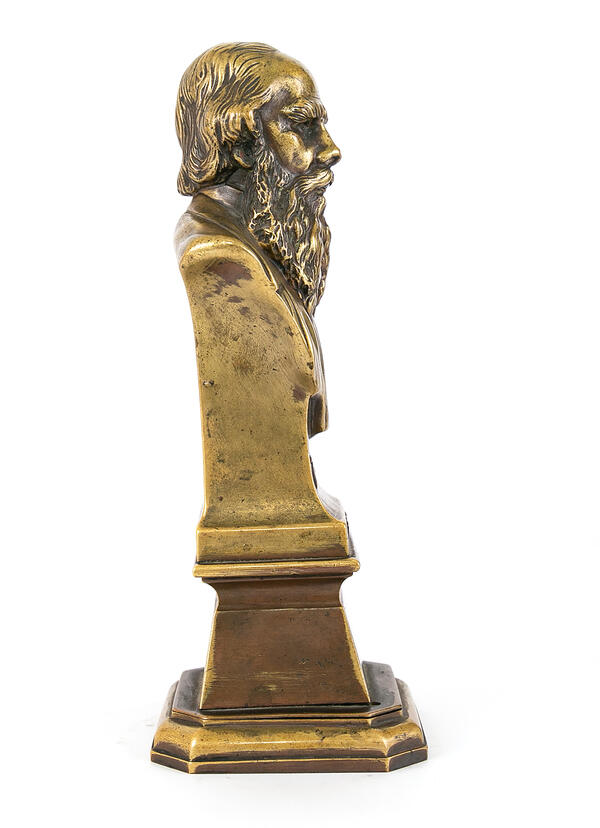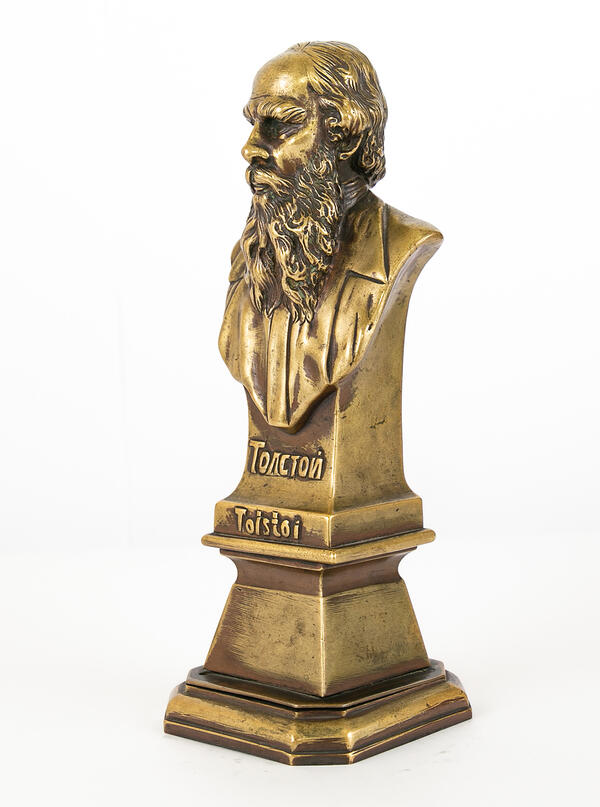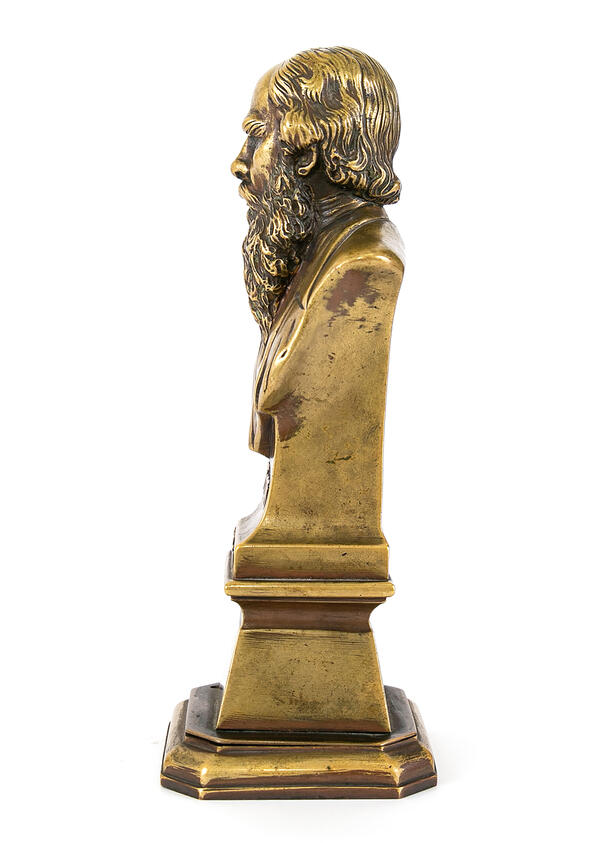Busts are sculptural portraits of a person from the chest up. Art historians state that they have existed since ancient Egypt and antiquity. For a long time, they were made not only for aesthetic purposes, but also to commemorate a person and were made either when the depicted person was alive or created based on their death masks. Such sculptures depicted both real personalities and mythological characters, and allegorical, personified images. In Russia, the genre of historical sculpture appeared during the reign of Peter I.
Most often, such mediums as wood, marble and metals are used to create busts. Those made of bronze are significantly more durable than wooden ones, although not as durable as those made of marble. Bronze busts are first cast and then, if necessary, refined by hand.
Busts of famous personalities reflect the culture and the ideological tendencies of the period they were made in. This bust of Leo Tolstoy is one such item.
In the 1880s, the
The movement continued to exist after the Revolution of 1917, but in the 1920s and 30s many of its participants were persecuted and their communes disbanded. Despite this, the founder of the “disgraced” doctrine was not disavowed by the regime and retained his place as a great writer and thinker.
Scholars who specialize in Tolstoy see the accounts left by the Tolstoyans, whose ranks included famous people, as a valuable source for studying the spiritual side of the thinker’s biography. In addition to these accounts, Leo Tolstoy’s followers carefully preserved the objects associated with their teacher, as is the case with the bust presented in the exhibition.
The sculptor depicted Tolstoy in his favorite “peasant” clothes. The famous loose long blouse with a collar and buttons down to the waist and folds on the chest can be seen in many photographs of the writer; it was this outfit that he preferred for walks, horseback riding and doing household chores.




